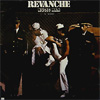Home
 Interviews
Interviews
 Mauro
Malavasi
Mauro
Malavasi
An
interview with Mauro Malavasi
By
Clay Montana
Malavasi
style from dancemusic to author song
 More
than 10 years ago, in 1978 to be precise, in the U.S. and
in the rest of the world, the "Italian style" dance
music was born. The pioneer in that period of international
success was a musician who graduated in composition, orchestra-
and choir direction at the conservatory: Mauro Malavasi, today
very famous for his collaborations with Lucio Dalla and Gianni
Morandi. In those days Malavasi's identification label was
Goody Music by means of which he launched successful groups
as Change (receiving 7 Grammy Awards for their debut album),
Peter Jacques Band, Macho, BB & Q Band and High Fashion. A
success page in the history of Italian dancemusic which comes
to the fore again 12 years later, now in the appearance of
Italohouse. We met Mauro Malavasi briefly, since the producer
was very busy together with Lucio Dalla for the realisation
of a new Pavarotti album and restyling the Cube hits Two heads
are better than one and Prince of the moment to the taste
of the moment.
More
than 10 years ago, in 1978 to be precise, in the U.S. and
in the rest of the world, the "Italian style" dance
music was born. The pioneer in that period of international
success was a musician who graduated in composition, orchestra-
and choir direction at the conservatory: Mauro Malavasi, today
very famous for his collaborations with Lucio Dalla and Gianni
Morandi. In those days Malavasi's identification label was
Goody Music by means of which he launched successful groups
as Change (receiving 7 Grammy Awards for their debut album),
Peter Jacques Band, Macho, BB & Q Band and High Fashion. A
success page in the history of Italian dancemusic which comes
to the fore again 12 years later, now in the appearance of
Italohouse. We met Mauro Malavasi briefly, since the producer
was very busy together with Lucio Dalla for the realisation
of a new Pavarotti album and restyling the Cube hits Two heads
are better than one and Prince of the moment to the taste
of the moment.
I
think that together with Jacques Fred Petrus and your mythical
label Goody Music you were the first to successfully
introduce dancemusic 'made in Italy' in such a difficult market
as the American. What are the differences between those times
and the recent explosion of Italohouse?
The
music is more or less the same despite the fact that there
are less means available. There's also more confusion today
and record companies are becoming more suspicious toward new
artists and new talents. Italohouse was born from a lack of
means  and
the triumph of the dance hits of the past with addition of
the loop and some original melodic ideas: working this way
reduces the costs more. If one has the possibility to try
out oneself, then this can lead to interesting and intelligent
products. For the rest combining all elements to a musical
creation surely isn't easy:
if one succeeds in realising a project that lasts 10 minutes,
it means that it really is something valuable. It is true
that after a first listen Italohouse can appear as an amorf
kind of music, commercial, without depth as youth would wish.
But all things considered, I believe this music contains more
truth and
valuable ideas than those big projects realised
and
the triumph of the dance hits of the past with addition of
the loop and some original melodic ideas: working this way
reduces the costs more. If one has the possibility to try
out oneself, then this can lead to interesting and intelligent
products. For the rest combining all elements to a musical
creation surely isn't easy:
if one succeeds in realising a project that lasts 10 minutes,
it means that it really is something valuable. It is true
that after a first listen Italohouse can appear as an amorf
kind of music, commercial, without depth as youth would wish.
But all things considered, I believe this music contains more
truth and
valuable ideas than those big projects realised  with
astronomical amounts of money. This music is a witness of
our time and one can also find a historic meaning in it. There
are also artists who succeed in making a respectable product
of it, like the project Black Box, who were my companions
at the conservatory. I always knew they had talent; they're
well prepared musicians, an intelligent team that works. I've
always supported them by saying that they should not weaken
because sooner or later their time would come. Today they
finally found a successful formula.
with
astronomical amounts of money. This music is a witness of
our time and one can also find a historic meaning in it. There
are also artists who succeed in making a respectable product
of it, like the project Black Box, who were my companions
at the conservatory. I always knew they had talent; they're
well prepared musicians, an intelligent team that works. I've
always supported them by saying that they should not weaken
because sooner or later their time would come. Today they
finally found a successful formula.
It
has been told that the success of Goody Music was the result
of the Italian melody combined with American musicality, a
formula suited as well for listening as for dancing. Italohouse
brought the Italian melody again to the fore in combination
with an ascetic sonority, sometimes hard to listen to.
The
elements of the asked question are still the same: if the
music is good, the public reacts positively; if the artists
work with sense and enthusiasm, the public is prepared to
ignore the flaws and deficient sounds: what interests people
is the creativity. According to me however, it's possible
to get more out of the success of Italo  house:
it should be a stepping stone in sight of new challenges which
could be reached by Italian artists if they believed more
in themselves. Now however we go to an over saturation in
the genre of house to the success of products which are even
vulgar and rude. But it is an understandable phenomenon: for
dancemusic it was a moment of less success, a bit like in
the period 1982-1983. At that time I was in the U.S. and I
experienced the phenomenon from first hand. It was the record
companies who decided that the hour of dancemusic was over
and that it was time for a revival of rock, heavy metal and
pop. Today we are in a moment that is favourable for dancemusic,
the cycles can start again.
house:
it should be a stepping stone in sight of new challenges which
could be reached by Italian artists if they believed more
in themselves. Now however we go to an over saturation in
the genre of house to the success of products which are even
vulgar and rude. But it is an understandable phenomenon: for
dancemusic it was a moment of less success, a bit like in
the period 1982-1983. At that time I was in the U.S. and I
experienced the phenomenon from first hand. It was the record
companies who decided that the hour of dancemusic was over
and that it was time for a revival of rock, heavy metal and
pop. Today we are in a moment that is favourable for dancemusic,
the cycles can start again.
What
were the motives that led to the end of Goody Music in 1981
in the U.S.? One talked about a financial fiasco.
I
left the states in 1983. Honestly, I had enough of it, and
I didn't feel an American, I couldn't focus my life on making
money. I also missed Italy too much (I'm an ardent nationalist
you know). I came in conflict with Goody Music. At that time,
I was a bit more than 20 years old and I knew very little
about the record business. There was actually a financial
fiasco and when I was aware of this, I decided to stop.
With
Paolo Gianolio and Davide Romani you formed a very strong
and successful team. Why didn't you continue together? Is
it true that there were rivalries among you?
This
isn't true. Davide, Paolo and I, we see each other often and
we are in very good contact. Paolo often works with Celso
Valli, Mina and so many others. Davide often works for his
own account. What concerns me, besides collaborations with
Lucio Dalla, I work with Rudy Trevisi.
You
are a real musician. Do you think that technology harmed musical
creativity?
Instruments
like samplers are not necessarily ascetic and cold, on the
contrary they can be of great value for the creation process.
They are a part of the technological baggage which is available
and it would
In
the time of Change you discovered and launched Luther Vandross
who is now a superstar in black music. Do you hear from each
other sometimes?
We
are in optimal contact; so much even that Luther included
two of my songs in his latest 'Best Of' album. Luther would
have loved to work with me but I don't like to be a long time
away far from home: I'm lazy and I'm scared to travel by plane.
In the near future, we will work together again, at least
from the moment I find a song suited for Luther, then I'll
propose it to him.
By
CLAY MONTANA - DISCO MAGAZINE, 1990
 Download
the original Italian version
(PDF file 1.15 Mb)
Download
the original Italian version
(PDF file 1.15 Mb)
Thanks
to Yves Le Page for the article and Dominique Lannoo (Italian
to French) and Francis Depuydt (French to English).